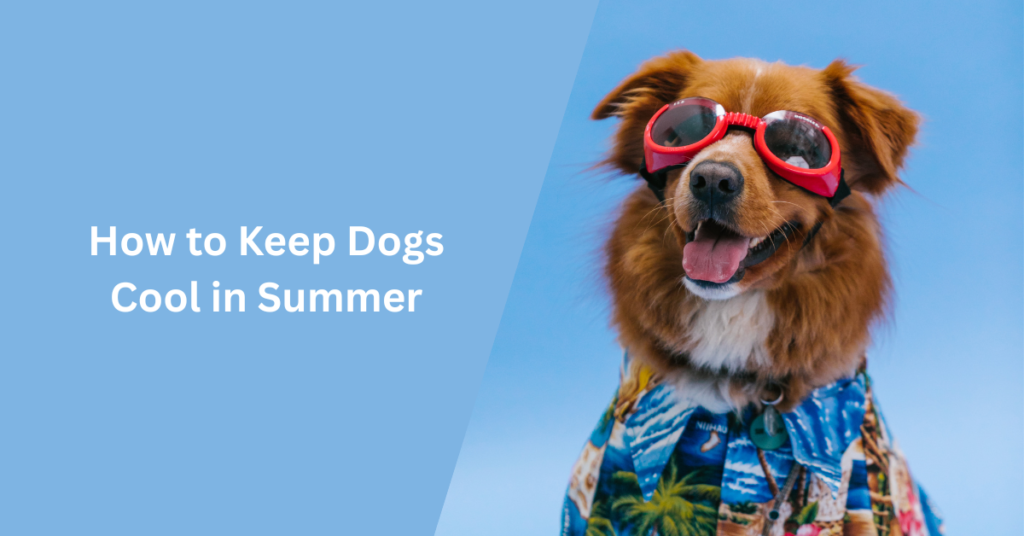To keep dogs cool in summer by providing fresh water, shade, and limiting exercise during peak heat. Use cooling mats, damp towels, or a kiddie pool to lower body temperature. Never leave dogs in cars, and offer frozen treats or ice cubes for relief. Regular grooming also helps prevent overheating.
Understanding How Dogs Cool Down
Dogs possess a unique cooling system that functions quite differently from humans. While we rely on millions of sweat glands spread across our bodies, dogs mainly depend on panting and their paw pads to regulate body temperature.
Why dogs overheat faster than humans
The primary cooling method for dogs is panting, which works through convection to evaporate water from their tongue and lungs. Moreover, dogs use a process called vasodilation, where blood vessels in their face and ears expand to bring warm blood closer to the surface, allowing it to cool.
Their fur, although protective, can also be a double-edged sword. While it acts as insulation against direct sun exposure, it may trap heat close to their body if not properly maintained. Therefore, regular grooming becomes crucial for maintaining their fur’s effectiveness as a natural temperature regulator.
How different breeds handle heat
Different breeds show varying levels of heat tolerance based on several physical characteristics:
- Coat Type and Color: Dogs with short, single-layer coats or no fur handle heat better than those with thick double coats. Light-colored coats in white, tan, or gray reflect heat rather than absorb it.
- Facial Structure: Breeds with longer muzzles process warm air more efficiently, cooling it before it reaches their lungs. Conversely, brachycephalic breeds (flat-faced dogs) such as Pugs, Boston Terriers, and Bulldogs struggle more in hot weather due to their shortened airways.
- Ear Shape: Dogs with erect ears typically cool down faster than those with floppy ears that trap warm air.
Some breeds naturally adapt better to warm climates. For instance, the Australian Cattle Dog, with its heritage linked to the hot Australian outback, shows remarkable heat tolerance. Similarly, the Basenji, originally from Africa, and the Chihuahua, native to Mexican deserts, demonstrate excellent adaptation to high temperatures.
Essential Indoor Cooling Methods
Creating a comfortable indoor environment stands as the first line of defense against summer heat. A well-planned indoor setup can make a significant difference in keeping your dog cool and comfortable.
Setting up cooling stations
Setting the indoor temperature to 78 degrees Fahrenheit provides an optimal environment for dogs. A programmable thermostat offers flexibility to manage temperatures even when away from home.
For enhanced cooling, place freezer blocks or frozen water bottles wrapped in towels near your dog’s favorite resting spots. Consider setting up multiple water stations throughout the house, adding ice cubes to water bowls to maintain coolness.
Using fans effectively
Contrary to popular belief, fans work differently for dogs than humans. While dogs might enjoy standing in front of a fan, it alone might not provide sufficient cooling in temperatures above 90 degrees Fahrenheit. Nevertheless, fans can be beneficial when used strategically:
- Combine fan use with dampened towels – wet your dog’s underside with cool (not cold) water and position a fan nearby
- Place frozen water bottles in front of the fan to create a cooler breeze
- For kenneled dogs, consider a portable five-speed mini fan with rechargeable batteries, providing 4-6 hours of cooling per charge
Creating cold spots
Establishing designated cool zones throughout your house helps your dog regulate their temperature effectively. Start by managing sunlight exposure – keep blinds closed during peak hours to prevent heat buildup.
Create cooling spots by:
- Placing damp towels in shaded areas for your dog to lie on
- Setting up chamois cooling cloths, similar to those used in car washes
- Providing cooling vests that work through evaporation
- Installing a cooling pad in your dog’s favorite spots
Outdoor Safety During Summer
Summer outings demand careful planning to protect your four-legged companion from heat-related risks. As temperatures soar, following specific safety guidelines becomes essential for outdoor activities.
Best times for walks
Scheduling walks at optimal times significantly reduces heat-related risks. Early morning or late evening walks prove safest, as these periods offer cooler temperatures. Specifically, avoid outdoor activities between 10 a.m. and 4 p.m., as these hours present the highest risk of heat-related complications.
Even at temperatures as low as 70°F, dogs face potential heatstroke risks. For maximum safety, experts recommend walking only when temperatures remain below 68°F, considering anything above 77°F highly risky. Consequently, splitting exercise into multiple shorter sessions throughout cooler hours proves more effective.
Checking ground temperature
Consider these surface-specific precautions:
- Asphalt retains heat longer than other surfaces
- Desert areas may see dirt temperatures reaching 140°F
- Grass trails offer safer alternatives to hot pavement
Safe play activities
Adapting summer activities helps maintain your dog’s well-being without compromising exercise needs. Instead of intense outdoor play, consider these safer alternatives:
- Indoor fetch with soft toys
- Hide-and-seek games with treats
- Mental enrichment activities in air-conditioned spaces
For outdoor activities, always ensure access to shade and fresh water. Avoid metal water bowls outdoors as they heat up quickly. Keep your dog on a leash, particularly in wilderness areas, to prevent accidents and maintain control over their activity level.
Natural Cooling Techniques
Water offers a natural and effective way to help your furry friend beat the summer heat. From splashing in pools to enjoying frozen delicacies, these cooling techniques combine fun with functionality.
Water-based activities
Swimming provides comprehensive exercise alongside cooling benefits, engaging every muscle group while maintaining optimal body temperature. Nonetheless, even water-loving dogs need careful monitoring as excessive excitement can lead to overheating.
For dogs hesitant about water, start with minimal exposure:
- Begin with a dry pool, gradually introducing tiny amounts of water
- Incorporate favorite toys and activities into water play
- Use food-dispensing toys in shallow water
- Create engaging games like bobbing for floating treats
Frozen treats and toys
Frozen treats offer an enjoyable way to lower body temperature while providing entertainment. When preparing these cooling snacks, consider these vet-approved options:
- Plain yogurt combined with dog-safe fruits
- Coconut milk as a dairy-free alternative
- Frozen green beans or small chunks of safe fruits
- Pureed watermelon, cantaloupe, or honeydew in ice cube trays
- Banana mixed with pumpkin or sweet potato
Emergency Signs and Response
Recognizing the signs of heat-related distress in dogs can mean the difference between life and death. Even mild overheating can quickly progress to a dangerous situation if left unaddressed.
Early warning signals
The initial signs of overheating often appear subtle yet demand immediate attention. A dog’s normal body temperature ranges from 99.5°F to 102.5°F. Watch for these early indicators:
- Excessive panting or difficulty breathing
- Increased salivation and drooling
- Bright red or gray gums
- Rapid heart rate
- Restlessness or agitation
- Seeking shade or water sources
As body temperature rises, dogs might display more concerning behaviors. Their saliva becomes thicker, alongside possible vomiting or diarrhea. The tongue may appear wider and longer, indicating rising body temperature.
When to call the vet
Immediate veterinary attention becomes crucial upon noticing:
- Body temperature exceeding 104°F
- Collapse or inability to stand
- Seizures or muscle tremors
- Grayish to purple mouth coloration
- Bloody diarrhea or vomiting
- Confusion or disorientation
Conclusion
Summer heat poses serious risks for our canine companions, making proper cooling essential for their safety and comfort. Understanding how dogs regulate their temperature differently from humans helps us provide better care during hot weather.
Keeping dogs cool requires a multi-faceted approach. Setting up indoor cooling stations, choosing appropriate times for outdoor activities, and offering water-based entertainment create a comprehensive cooling strategy. These methods become especially important for breeds with thick coats or flat faces, who face greater challenges in hot weather.
Most importantly, recognizing early warning signs of overheating can save your dog’s life. Quick action and proper first aid knowledge make a crucial difference when heat-related emergencies arise. Remember that prevention through proper cooling techniques proves far better than dealing with heat-related emergencies.
I’ve loved dogs all my life and have cared for many different breeds over the years. Here, I share simple tips, stories, and helpful advice for all dog lovers. Whether you’re a new pet parent or a lifelong dog fan, you’ll find something useful and fun on my site.


